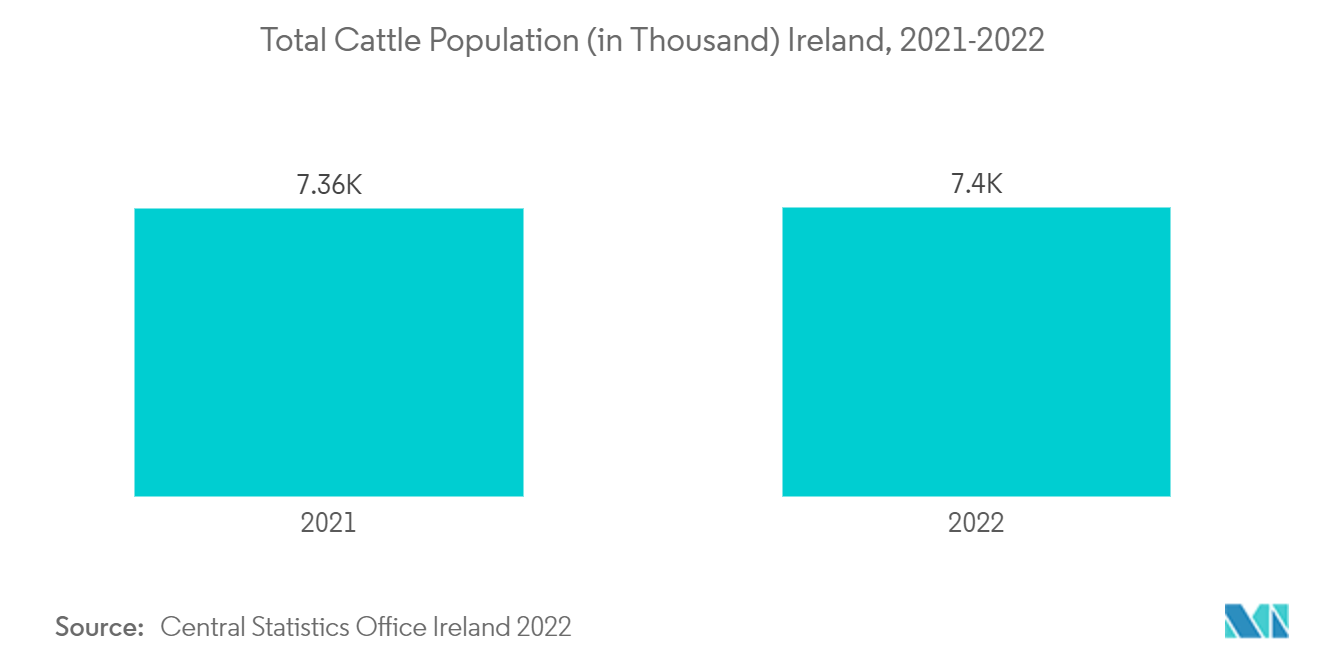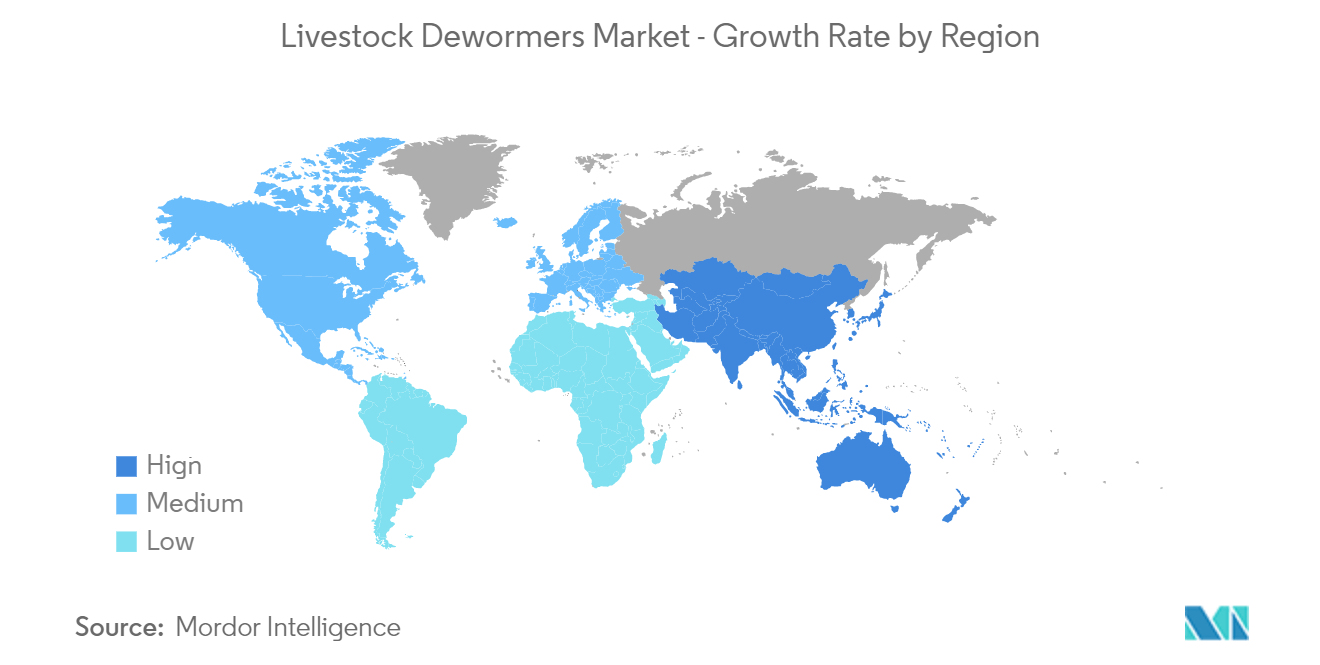Market Trends of Livestock Dewormers Industry
This section covers the major market trends shaping the Livestock Dewormers Market according to our research experts:
The Cattle Segment is Expected to Show Better Growth Over the Forecast Years
The growth of the cattle segment is mainly attributed to the high population of cattle across the world and the dominance of cattle farming as a major income source for people in many countries. For instance, as per the Livestock and Products Semi-annual - 2022 by USDA, FAS New Delhi (Post) estimated the total cattle stock number to be 306.9 million head, as compared to 305.5 million heads in 2021.
Furthermore, per the Central Statistics Office Ireland Crops and Livestock, the total cattle numbers were up by 37,300 from 2021 to 7,396,200 in 2022.
Moreover, research studies involving cattle deworming are expected to boost segment growth. As per an article published in October 2022 in PubMed, only the concurrent application of both eprinomectin and oxfendazole was effective at reducing fecal egg counts in beef cattle. The simultaneous use of anthelmintics is extremely effective and prevents resistance, according to model simulations and experiments on live animals.

North America is Anticipated to Hold a Significant Market Share in the Livestock Dewormers Market Over the Forecast Period
North America is among the major contributors to livestock and the implementation of animal healthcare benefits across the globe. The market is growing rapidly due to the increasing prevalence of livestock worm infection and the rise in veterinary disease awareness programs coupled with the growing demand for animal products. For instance, in October 2022, the Canadian Veterinary Medical Association (CVMA) conducted an annual national public awareness campaign named 'Animal Health Week (AHW)' hosted by veterinarians across Canada. Each year, through AHW, the veterinary community draws attention to an important health-related message. The 2022 campaign's theme displayed how Canada's veterinary professionals occupy unique positions within the national One Health community in protecting animal health which, in turn, protects everyone's health.
Furthermore, per the USDA update published in August 2022, USDA projects poultry imports to grow to 17.5 million metric tons by 2031. In comparison, pork imports are projected to increase to 14.8 million metric tons by 2031, and beef imports are expected to rise to 14.3 million metric tons. With such an increase in poultry and livestock businesses, demand for deworming livestock also rises and thereby boosting the market growth over the forecast period.
Moreover, as per the USDA Livestock and Products semi-annual report published in March 2021, Mexico's pig crop for 2021 stands at 20.8 million heads and calf crop was projected at 8.16 million heads in 2021. Such a rise in livestock food production demands proper deworming and thereby drives the market growth over the forecast period.


